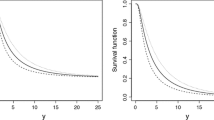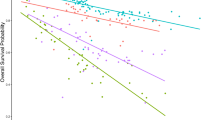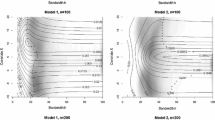Abstract
Efficiency and robustness are two essential concerns on statistical estimation. Unfortunately, it was widely accepted that there existed a contradiction between achieving efficiency and robustness simultaneously. For parametric models with complete data, the minimum Hellinger distance estimation introduced by Beran (Ann Stat 5:445–463, 1977) has been shown that it can reconcile this contradiction. Because data in biostatistics, actuarial science or economics are often subject to censoring and even involve a fraction of long-term survivors, our study aims to extend the minimum Hellinger distance estimation to a two-sample semiparametric cure rate model with right-censored survival data. The asymptotic properties such as consistency, efficiency, normality, and robustness of the proposed estimator have been considered and its performances are examined via simulation studies in comparison with those of the maximum semiparametric conditional likelihood estimator introduced by Shen et al. (J Am Stat Assoc 102:1235–1244, 2007). Finally, our method is illustrated by analyzing a real data set: Bone Marrow Transplant Data.



Similar content being viewed by others
References
Beran R (1977) Minimum Hellinger distance estimators for parametric models. Ann Stat 5:445–463
Cheng SC, Wei LJ, Ying Z (1995) Analysis of transformation models with censored data. Biometrika 82:835–845
Diehl S, Stute W (1988) Kernel density and hazard function estimation in the presence of censoring. J Multivar Anal 25:299–310
Karlis D, Xekalaki E (2001) Robust inference for finite Poisson mixtures. J Stat Plan Inference 93:93–115
Klein JP, Andersen PK (2005) Regression modeling of competing risks data based on pseudovalues of the cumulative incidence function. Biometrics 61:223–229
Lindsay BG (1994) Efficiency versus robustness: the case for minimum Hellinger distance and related methods. Ann Stat 22:1081–1114
Lu Z, Hui YV, Lee AH (2003) Minimum Hellinger distance estimation for finite mixtures of Poisson regression models and its applications. Biometrics 59:1016–1026
Maller RA, Zhou S (1992) Estimating the proportion of immunes in a censored sample. Biometrika 79:731–739
Maller RA, Zhou X (1996) Survival analysis with long-term survivors. Wiley, Chichester
Qin J (1993) Empirical likelihood in biased sample problems. Ann Stat 21:1182–1196
Qin J, Zhang B (1997) A goodness-of-fit test for logistic regression models based on case-control data. Biometrika 84:609–618
Rousseeuw PJ, Croux C (1993) Alternatives to the median absolute deviation. J Am Stat Assoc 88:1273–1283
Shen Y, Qin J, Costantino JP (2007) Inference of Tamoxifen’s effects on prevention of breast cancer from a randomized controlled trial. J Am Stat Assoc 102:1235–1244
Simpson DG (1987) Minimum Hellinger distance estimation for the analysis of count data. J Am Stat Assoc 82:802–807
Szydlo R, Goldman JM, Klein JP et al (1997) Results of allogeneic bone marrow transplants for leukemia using donors other than HLA-identical siblings. J Clin Oncol 15:1767–1777
Tamura RN, Boos DD (1986) Minimum Hellinger distance estimation for multivariate location and covariance. J Am Stat Assoc 81:223–229
Woo M, Sriram TN (2006) Robust estimation of mixture complexity. J Am Stat Assoc 101:1475–1486
Wu J (2007) Minimum Hellinger distance estimation in semiparametric models. Ph.D. dissertation, University of Alberta, Canada
Wu J, Karunamuni RJ (2009) On minimum Hellinger distance estimation. Can J Stat 37:514–533
Wu J, Karunamuni RJ, Zhang B (2010) Minimum Hellinger distance estimation in a two-sample semiparametric model. J Multivar Anal 101:1102–1122
Yang S (1991) Minimum Hellinger distance estimation of parameter in the random censorship model. Ann Stat 19:579–602
Ying Z (1992) Minimum Hellinger-type distance estimation for censored data. Biometrika 20:1361–1390
Zhang J, Peng Y (2009) Accelerated hazards mixture cure model. Lifetime Data Anal 15:455–467
Acknowledgments
The authors acknowledge with gratitude the support for this research via Discovery Grants from National Science and Engineering Council (NSERC) of Canada, and they would like to thank the Editor and two anonymous referees for their constructive comments.
Author information
Authors and Affiliations
Corresponding author
Rights and permissions
About this article
Cite this article
Zhu, Y., Wu, J. & Lu, X. Minimum Hellinger distance estimation for a two-sample semiparametric cure rate model with censored survival data. Comput Stat 28, 2495–2518 (2013). https://doi.org/10.1007/s00180-013-0416-7
Received:
Accepted:
Published:
Issue Date:
DOI: https://doi.org/10.1007/s00180-013-0416-7




